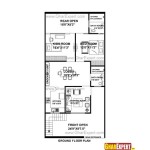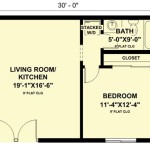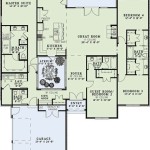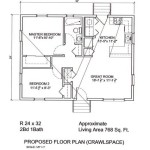How To Get Floor Plans
Floor plans are a crucial aspect of any architectural project. They provide a detailed overview of the layout, dimensions, and organization of a building, serving as a blueprint for construction and interior design. If you're seeking to obtain floor plans, there are several approaches you can take, depending on the availability and accessibility of the plans.
1. Contact the Architect or Builder
The most straightforward way to acquire floor plans is to reach out to the architect or builder responsible for the building. They typically retain copies of the original plans, which can be requested for a fee. This option is particularly useful if the building is newly constructed or has undergone significant renovations.
2. Visit the Local Planning Department
Many cities and towns maintain records of building permits, which often include floor plans submitted as part of the application process. You can visit the local planning department and inquire about the availability of floor plans for the property you're interested in. While this method may not always yield results, it's worth exploring.
3. Check with the Current Owner
If the building is privately owned, you can attempt to contact the current owner and request access to the floor plans. While some owners may be hesitant to share these documents, it's worth reaching out politely and explaining your reasons for needing them.
4. Utilize Online Resources
Various online platforms offer access to floor plans. Some websites, such as Zillow and Trulia, feature floor plans for properties listed for sale or rent. Additionally, there are dedicated websites like FloorPlanSource and HousePlans.com that provide a comprehensive collection of floor plans for residential and commercial buildings. These plans can often be purchased for a nominal fee.
5. Hire a Surveyor or Architect
If none of the above methods yield results, you can consider hiring a surveyor or architect to create floor plans for you. They will conduct a thorough survey of the property, taking measurements and creating detailed drawings that accurately represent the layout and dimensions of the building.
6. Use DIY Software
There are several DIY software programs available that allow you to create your own floor plans. These programs typically provide user-friendly interfaces and pre-defined templates to assist you in designing and arranging the layout of your building. However, it's important to note that these plans may not be as accurate or detailed as professionally drafted plans.
7. Consider Open Source Floor Plans
Open source floor plans are freely available online and can be downloaded and modified to suit your needs. These plans are typically created by architects and designers who share their work with the public. While they may not be tailored to your specific requirements, they can serve as a valuable starting point for designing your own floor plans.
When obtaining floor plans, it's essential to ensure their accuracy and completeness. Verify the scale, dimensions, and other details carefully to avoid any potential errors or discrepancies during construction or renovation. Consulting with a qualified professional, such as an architect or engineer, can provide valuable insights and guidance in interpreting and utilizing floor plans effectively.

Get Floor Plan Toolai The World S Most Complete And Comprehensive Collection Of Ai Artificial Intelligence Tools
How To Find Floor Plans Or Blueprints For My House It S In And 30 Years Old Is There Someone Who Could Draw Me The If Originals Are Impossible

Design Your Own House Floor Plans Roomsketcher

9 Ways To Find Floor Plans Of An Existing House Archid

Create Professional 2d And 3d Floor Plans

How To Create A Floor Plan Make Rapid Draw Object Conceptdraw Diagram Compatibility With Ms Visio Drawin Plans

Create Professional 2d And 3d Floor Plans

9 Ways To Find Floor Plans Of An Existing House Archid

Design Your Own House Floor Plans Roomsketcher

Design Your Own House Floor Plans Roomsketcher








